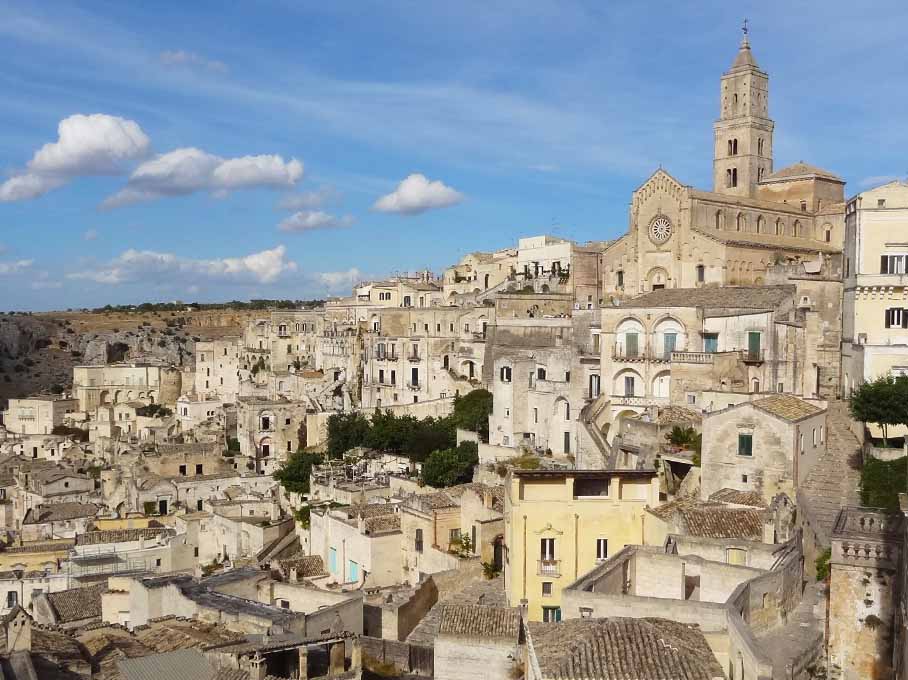
L’Arte di Matera: Dai Sassi Antichi alle Sculture Moderne
Art and Soul of Matera: From Ancient Sassi to Modern Sculpture
Matera, un gioiello senza tempo
Matera, a Timeless Gem
Oggi a Matera ho avuto l’opportunità di scoprire i suoi tesori. Prima di tutto, Matera stessa è un vero gioiello. I “Sassi”, che costituiscono la parte antica della città, offrono uno spettacolo straordinario fin dal primo sguardo. Dietro ogni angolo c’è qualcosa di nuovo da ammirare. Continuo a scattare foto dalla mia finestra perché, ad ogni movimento dei raggi del sole, la vista sulla città cambia, riuscendo ogni volta a togliermi il fiato.
Today in Matera I had the chance to explore its treasures. First of all, Matera itself is a true jewel. The “Sassi,” which form the ancient part of the city, are a stunning sight from the very first glance. Around every corner, there’s something new to discover. I can’t stop taking photos from my window because, with every shift in the sun’s rays, the view of the city changes, and it takes my breath away all over again.
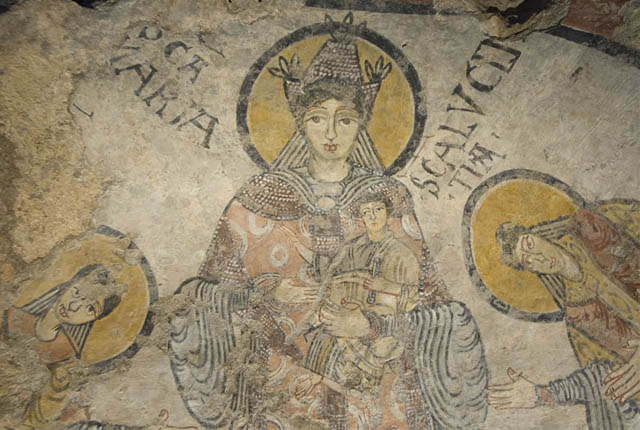
Cripta del Peccato Originale: La Cappella Sistina del Sud
Crypt of the Original Sin: The Sistine Chapel of the South
A Matera l’arte antica convive felicemente con l’arte moderna. Ho iniziato il mio percorso nel mondo dell’arte con la visita alla Cripta del Peccato Originale, descritta come la Cappella Sistina del Sud. A pochi chilometri da Matera, in una delle gravine che attraversano l’altopiano della Murgia, si trova uno dei luoghi più suggestivi della zona. All’interno di una piccola cavità scavata nel tufo, si possono ammirare gli affreschi del “Pittore dei Fiori di Matera”, che ha narrato scene del Vecchio e del Nuovo Testamento in un ciclo pittorico risalente al IX secolo d.C.
In Matera, ancient art lives harmoniously with modern art. I began my artistic ramble with a visit to the Crypt of the Original Sin, often called the Sistine Chapel of the South. Just a few kilometers from Matera, in one of the ravines cutting through the Murgia plateau, lies one of the most evocative spots in the region. Inside a small hollow in the limestone cliff, you’ll find frescoes by the “Painter of Flowers of Matera,” depicting scenes from the Old and New Testament in a cycle of paintings dating back to the 9th century AD.
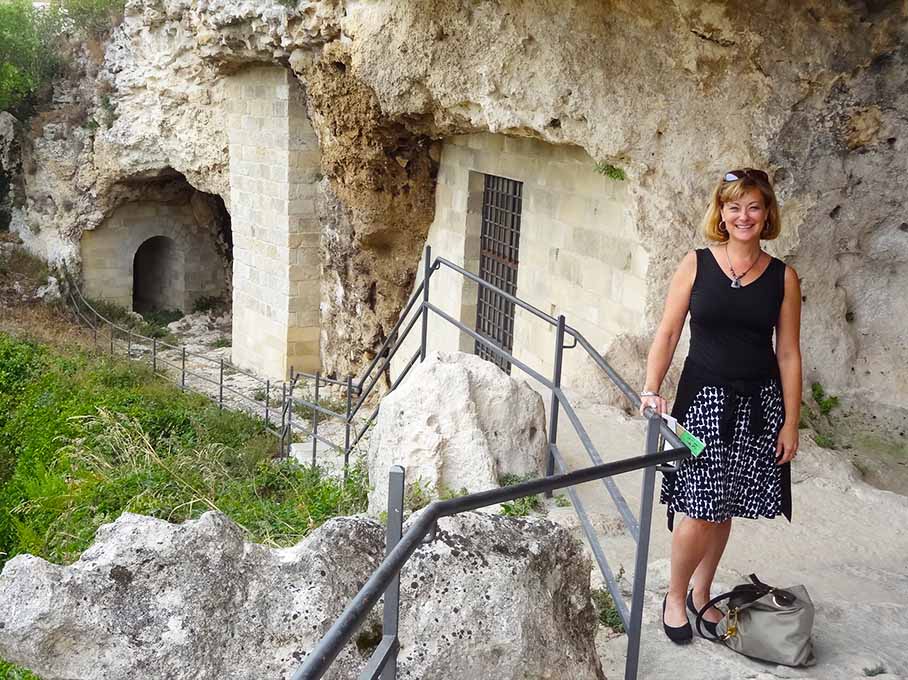
Restauro e meraviglia nella Cripta
Restoration and Wonder in the Crypt
La cripta fu scoperta nel maggio del 1963 e, grazie a un restauro esemplare organizzato dalla Fondazione Zètema di Matera e dall’Istituto Superiore per la Conservazione e il Restauro, è stata riportata al suo antico splendore. Oggi possiamo ammirare i meravigliosi affreschi che adornano questa grotta unica.
The crypt was discovered in May 1963, and thanks to an exemplary restoration by the Zètema Foundation of Matera and the Institute for Conservation and Restoration, it has been brought back to its original splendor. Today, we can marvel at the magnificent frescoes adorning this unique cave.
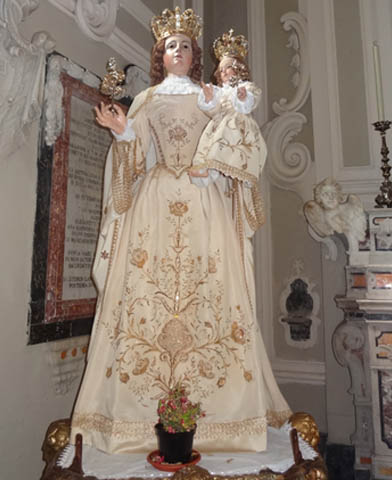
La Madonna della Bruna nella Chiesa di San Francesco
The Madonna della Bruna in the Church of San Francesco
Dopo la visita alla cripta, siamo entrati nella Chiesa di San Francesco d’Assisi, dove abbiamo scoperto la statua della Madonna della Bruna! Che emozione trovarsi al cospetto di questa famosa statua nella sua chiesa a Matera. Forse ricordate un blog che ho scritto in passato sulla festa dedicata alla Madonna della Bruna. La chiesa è molto bella e potete conoscerla meglio con questo tour virtuale.
After visiting the crypt, we stepped inside the Church of San Francesco d’Assisi, where we discovered the statue of the Madonna della Bruna! It was thrilling to stand before this famous statue in her own church in Matera. Perhaps you remember a blog I wrote in the past about the festival of the Madonna della Bruna. The church is stunning, and you can learn more about it through this virtual tour.
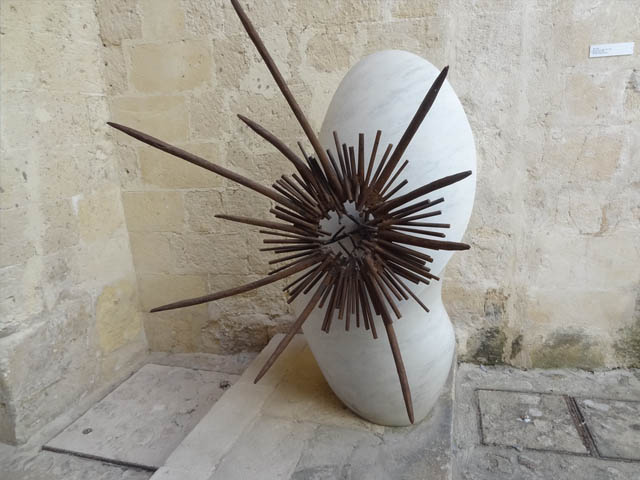
Arte moderna al MUSMA: Una sorpresa nei Sassi
Modern Art at MUSMA: A Surprise in the Sassi
Ho concluso la mia giornata dedicata all’arte a Matera con un salto nel tempo verso l’arte contemporanea, visitando il MUSMA, il Museo della Scultura Contemporanea situato nel cuore dei Sassi. Il MUSMA è il museo italiano più importante interamente dedicato alla scultura e ospita una ricca collezione di opere italiane e internazionali dal 1800 a oggi. Nelle grotte primitive di un’antica città, si può scoprire l’arte contemporanea, creando un contrasto estremamente interessante e, a volte, sorprendente.
I concluded my art-filled day in Matera with a leap into the modern era by visiting MUSMA, the Museum of Contemporary Sculpture located in the heart of the Sassi. MUSMA is Italy’s most important museum entirely dedicated to sculpture, housing a rich collection of Italian and international works from the 1800s to today. In the primitive caves of an ancient city, you can discover contemporary art, offering a striking and often surprising contrast.
Cripta del Peccato Originale
Tra Pietre Antiche e Arte Moderna: Matera è un Tesoro da Scoprire
Between Ancient Stones and Modern Art: Matera is a Treasure
Matera è una città che incanta con i suoi contrasti: dalle antiche pietre dei Sassi alle audaci opere moderne del MUSMA, ogni angolo racconta una storia che affascina e stupisce. È un luogo in cui il passato dialoga con il presente, creando un’esperienza unica e indimenticabile. Matera non è solo da vedere, ma da vivere, scoprendo la sua anima a ogni passo.
Matera is a city that enchants with its contrasts: from the ancient stones of the Sassi to the bold modern works of MUSMA, every corner tells a story that captivates and amazes. It’s a place where the past speaks to the present, creating a one-of-a-kind, unforgettable experience. Matera isn’t just a city to see—it’s a city to live, discovering its soul with every step.
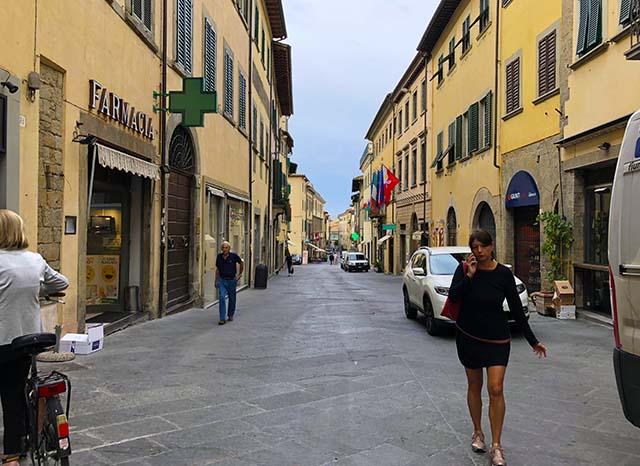
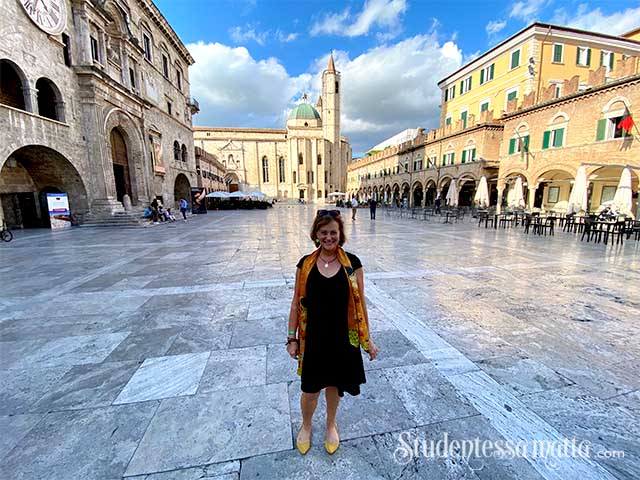

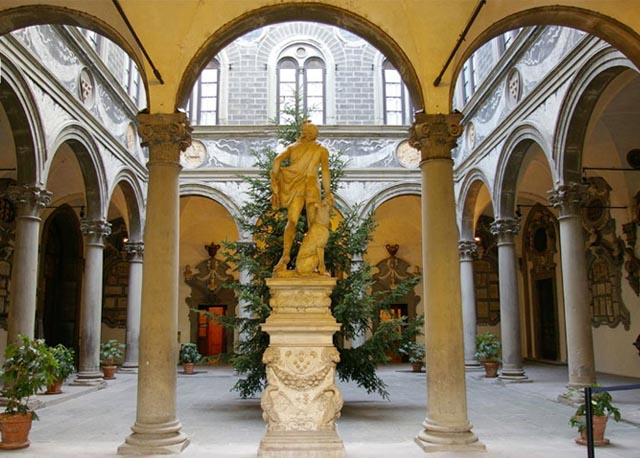
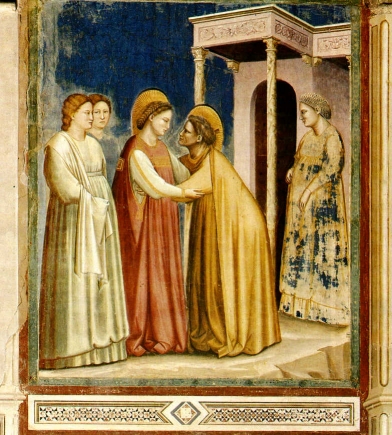
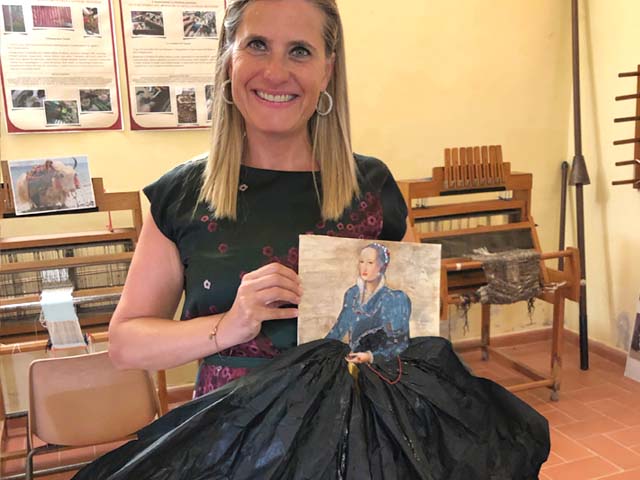





Hi Melissa
This was a particularly fascinating blog, because it was so audiovisual! I’m trying to improve my Italian and like most people I don’t find reading a passage in Italian too difficult (at my own pace!!). But following spoken Italian, and of course, actually speaking it, is a much more challenging proposition. So thank you for taking the trouble to include relevant video clips with Italian voice-over.